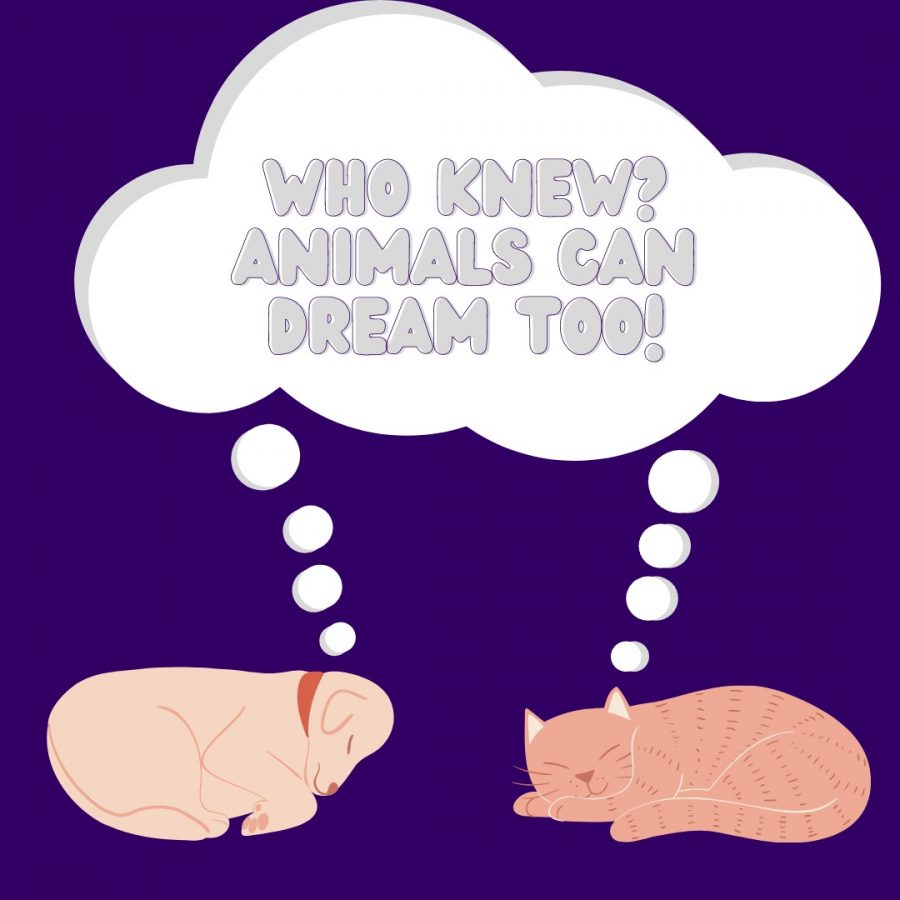Who knew? Animals can dream too!
Dreams can become humans’ biggest fantasy or can trap them in their deepest, darkest fears. But, are humans the only animals who experience these complicated images?
Most mammals and household pets dream through a process similar to humans. In human sleep cycles, there are five stages of sleep. Dreams occur during the fifth stage, rapid eye movement (REM), due to the increase in brain activity. While unlikely, dreams can also occur in non-REM sleep, sleep stages one to three, where rapid eye movement is not present.
After discovering REM sleep in 1953, research studies regarding whether or not animals experienced similar stages began to pop up, with more complicated studies appearing throughout the 1960s until today.
“Almost all mammals and birds that have been studied – from dogs and cats to duck-billed platypuses, and even reptiles – seem to go into this stage of Rapid Eye Movement sleep,” EarthSky, a science radio station, said.
These results were found through studies showing comparisons of human and animal electrical activity in the brain, ultimately displaying a similarity in the animals’ brain activity to humans’. Much of the research regarding dream patterns in animals was done using rats, as their brain structures resemble primitive elements of the brain. For example, a 2001 Massachusetts Institute of Technology study compared the brain activity of awake and sleeping rats. The study showed that the brain activity shown at a specific part of a maze when awake could be found again while the rats were asleep, indicating that the rats were going through the maze while sleeping. According to the study, the researchers were even able to tell where in the maze they were through these relations.
Moreover, another great candidate for this study is cats since they sleep for about 15 hours a day. Interest in sleep research increased after the discovery of REM sleep in cats by William Dement in 1958 and the sleep studies of psychologist Micehal Jouvet. During Jouvet’s studies, he discovered that during sleep other than REM, cats stayed still, but during REM sleep they went through different motions, such as pouncing and hissing.
According to Dr. Deirde Barrett, a teacher and a clinical and evolutionary psychologist at Harvard Medical School, it is believed that both humans and cats dream about their daily experiences. Yet, the experiences are different depending on the creature. She explains that humans dream about what interests them.
Regarding dogs, they also experience dreams similar to the way humans do. Using electroencephalograms (EEGs), canine brain wave activity has been tested during sleep. It has been found that like the experiments with cats and rats, similarities have been discovered in the patterns of brain activity and sleep. The research has shown that dogs enter a sleep stage similar to REM sleep during which their heart rate increases and their breathing becomes more irregular, which are indicating signs of dreaming. During these dreams dogs may move their legs, whimper or breathe rapidly. We do not know what they dream about specifically, but it is most likely similar to cats, as in they dream like humans do also.
While each animal may have a different sleep pattern, through research we are able to establish similarities in the REM stage of sleep, where animals may dream like humans. Next time your pet seems to be squirming during their sleep, you might wonder about what imaginary lands their brains are taking them to.






























